Art Sunday 01/05/08: Louis Comfort Tiffany
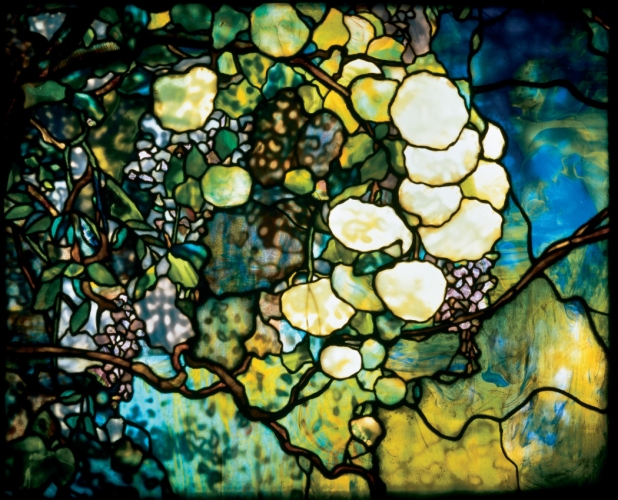 Snowball Window
Snowball Window
Louis Comfort Tiffany
Leaded Favrile Glass, 1904
Metropolitan Museum of Art
Born in New York City to the founder of Tiffany & Co., the famous jewelry store, Louis Comfort Tiffany (1848-1933) became known for his designs of richly colored works of glass in the Art Nouveau style. However, he expressed no interest in the family business and focused on his own painting talents, starting as a creator of landscapes, still lifes, and genre scenes, working in both oil and watercolor.
Louis was interested in painting as a young man; he studied with George Inness and traveled in Europe and Africa, recording his impressions. Because of his pictures’ decorative qualities, they were successful in New York.
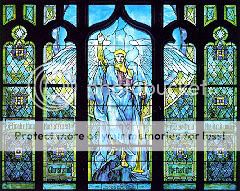
By the 1870s Tiffany was becoming interested in the decorative arts. He and the painter John La Farge studied glassmaking at the Heidt glassworks in Brooklyn. Their original individual experiments probably concerned stained glass. However, the process whereby an iridescent finish could be produced on glass fascinated Tiffany; he was trying to duplicate the finish seen on ancient Greek, Roman, and other glass which had been buried for many hundreds of years. By 1880 he had applied for patents on this type of finish.
In 1879 he founded the Louis C. Tiffany Company, “Associated Artists.” The firm decorated private and public buildings. Two of the best examples of this work in New York City were the 7th Regiment Armory (1880) and the H.O. Havemeyer house (1890; destroyed). In 1892 he founded the Tiffany Glass and Decorating Company, which specialized in producing stained-glass windows and glass mosaics. By this time he was also producing blown glass for both decorative and table-service use, and in 1893 he established his own furnaces for this purpose. The company was reorganized into Tiffany Studios in 1900.
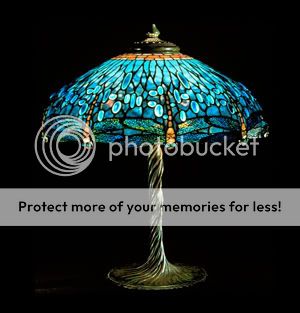
In the following years, Tiffany produced jewelry, enamels, pottery, lamps, glass, mosaics, and monumental stained-glass windows. He built a palatial home, Laurelton Hall, at Oyster Bay, Long Island, which overshadowed in luxury and visual impact his several residences in New York City. In 1918 Tiffany gave Laurelton Hall (destroyed) to the Louis Comfort Tiffany Foundation, which administered a fellowship program for young artists. The Tiffany firm was not disbanded until 3 years after its founder’s death on Jan. 17, 1933.
Tiffany Glass
Tiffany’s genius is seen in his decorative productions in glass and metal. For the glass he originated the trademark Favrile, and the name became synonymous with these handmade products of high quality. It is doubtful that Tiffany did much of the glassblowing himself, but he personally supervised the craftsmen and encouraged them to be as inventive as possible. As a result, there are highly individual vases, bottles, and dishes in a multitude of colors and techniques. Some of the pieces were utiliarian, but others were executed often as a pure tour de force. Some were treated with acids which gave the iridescent effect of ancient excavated glass. Another type, called lava glass, resembled volcanic lava. One of the most complicated types was cameo-style glass. After 1900 more or less standardized sets of tableware began to be produced; they do not have the individuality and attention to detail of the purely decorative pieces.
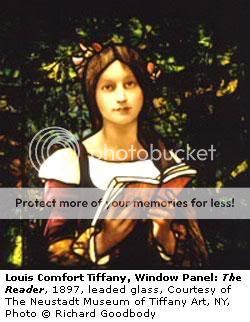
Tiffany glass is marked in a number of ways. Often it is found with scratched marks – the initials L.C.T. or the name spelled out; but the word FAVRILE and various numbers are the marks most often encountered. Sometimes small paper labels, often marked T. G. & D. Co., are pasted to pieces. Not all pieces have a distinguishing mark, however.
Tiffany Metalwork
Metal alloys were used to fashion bowls, boxes, vases, candlesticks, desk sets, and lamps. A number of finishes could be applied to these pieces, so that they varied from a shiny gold to a dark-green bronze patination, which in some instances became almost black. Brightly colored enamels were used on some pieces. The lamps had shades of stained glass which was leaded in flower forms, geometric shapes, or tiles. These pieces are often stamped TIFFANY STUDIOS. In style, they sometimes show the influence of 19th-century historical revivalism. Some of the shapes are derived from classical art, and others are inspired by Egyptian, Byzantine, Romanesque, and even Japanese forms.
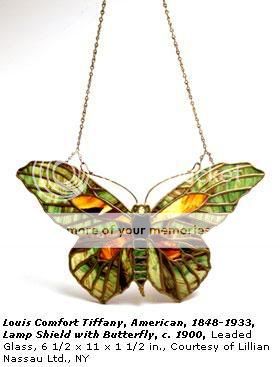
However, Tiffany exhibited his most progressive tendencies in pieces in the Art Nouveau style. Indeed, he was one of the few Americans involved in this predominantly European movement, and his works survive as one of its most elegant statements. These pieces are often inspired by nature and conceived as a single unit free from the fussiness of revivalism.
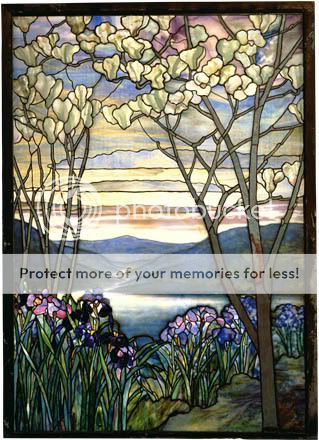
Magnolias and Irises 1908
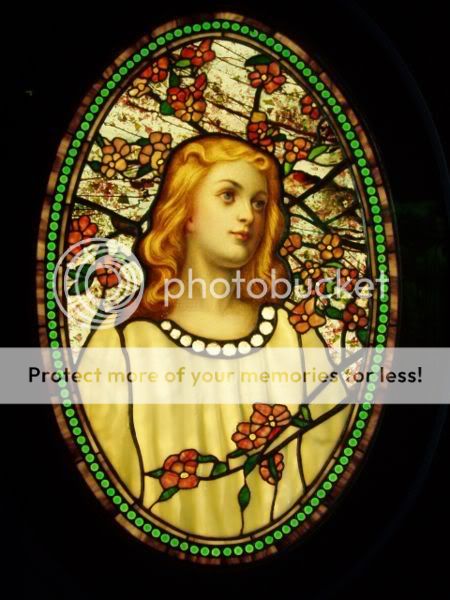
Girl with Cherry Blossoms by Louis Tiffany 1890
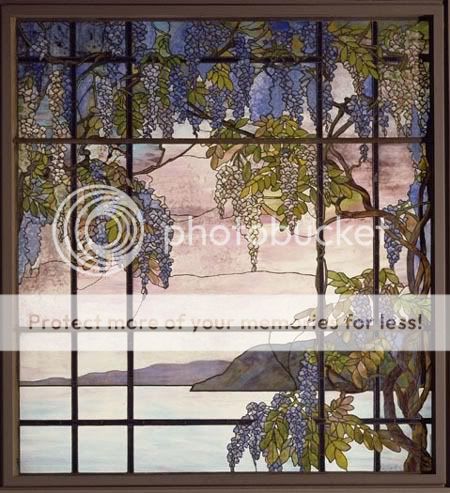
View of Oyster Bay by Louis Tiffany 1908
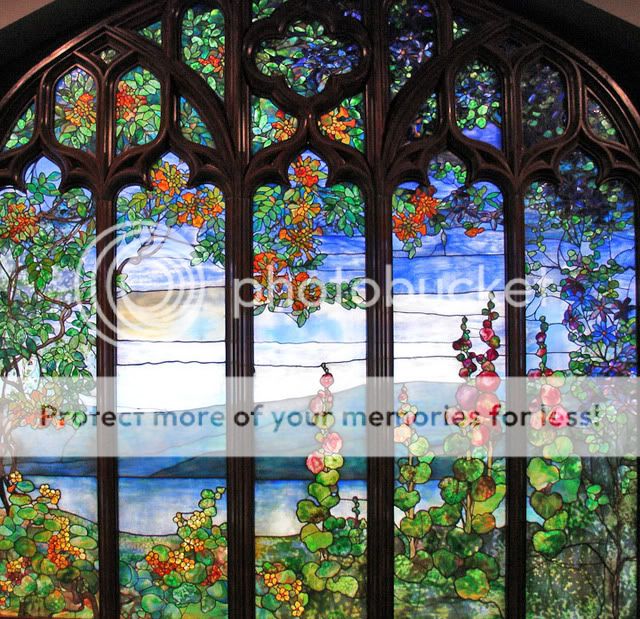
Landscape with Hollyhocks by Louis Comfort Tiffany
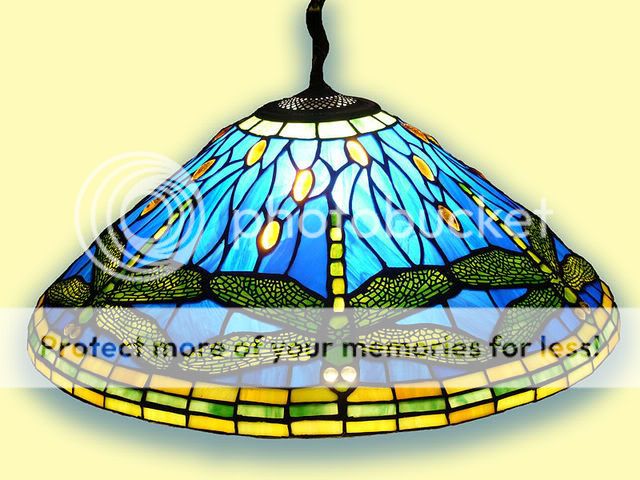
Tiffany Dragonfly Style Lamp
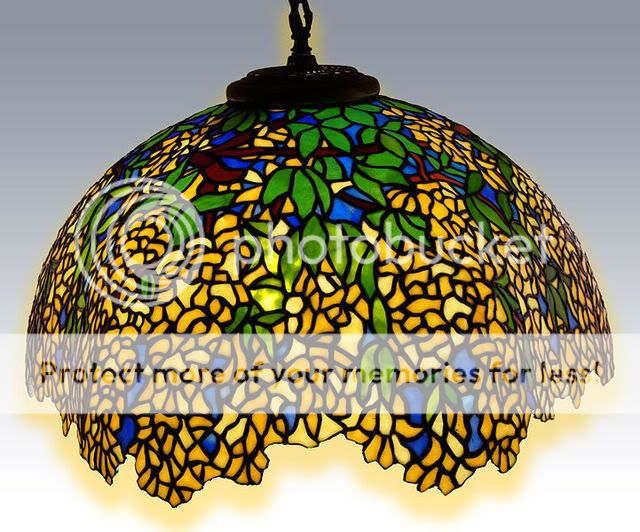
Tiffany Laburnum Style Lamp

Tiffany Lotus Leaf Style Lamp
|
philsgal7759 wrote on Jan 5, ’08
WOW these are gorgeous! I think I like the last best as it really incorporates the wood framing into the piece
|
|
lauritasita wrote on Jan 5, ’08
My favorite is the first one because I love all those blue colors !!!
|
|
wickedlyinnocent wrote on Jan 5, ’08
I was planning to leave this for breakfast, but I coudn’t resist a visit after dinner. Beautiful, I love the decorative arts and Art Nouveau and Louis Tiffany’s glass works are as lovely as jewelry.
|
|
crosswindsart22 wrote on Jan 5, ’08
Beauty captured in the Art Form of glass From bevel to stain Remain after years past… Each piece holds unique value Excellent presentation for new inspiring Artists ! Working with glass is challenging Most rewarding, memento of Great Talent Remains, living. This post, perfect example Fine Art remembered by someone Like you, with keen eyes for unique original expressions… yesterday or today. Impressive. Art, various forms, This is another example of how beautiful… simple things can be. Mere remembrance of once was, Can still remain in it’s finest glory. Dreams of an Artist,
As always, appreciation for such an exceptional display of Fine Art. Dyxie Dymond* Fort Morgan Alabama Crosswinds Art 22 cwellc* |
|
strongwilledwoman wrote on Jan 5, ’08
A great history lesson on Tiffany, thanks.
|
|
lauritasita wrote on Jan 6, ’08
I have a Tiffany lamp in my bedroom, but it doesn’t come close to the beautiful ones I have pictured here ! The colors are so lovely.
|
|
starfishred wrote on Jan 6, ’08
I have a couple like the dragonfly sort of but nothing like these how wonderful thanks
|
|
lauritasita wrote on Jan 6, ’08
I absolutely adore how he uses those color combinations on that “Snowball Window” stained glass piece.
|
|
luisguerra wrote on Jan 8, ’08
First thing that poped into my head as I look at them… that movie called the Time Machine
|

Comments
Art Sunday 01/05/08: Louis Comfort Tiffany — No Comments
HTML tags allowed in your comment: <a href="" title=""> <abbr title=""> <acronym title=""> <b> <blockquote cite=""> <cite> <code> <del datetime=""> <em> <i> <q cite=""> <s> <strike> <strong>